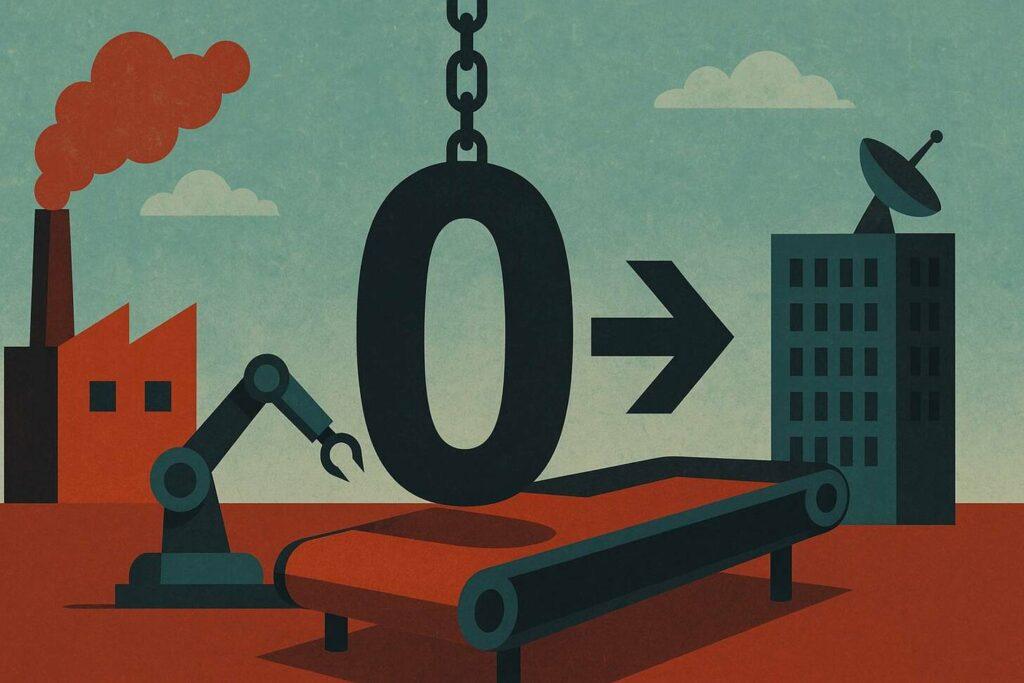What if a single mistake could erase all your hard work? That’s the core idea behind the multiplying by zero mental model. Just like 1 × 0 = 0 in math, one critical flaw—a missing ingredient, a broken part, or a compliance error—can collapse even the most carefully built plans.
This concept isn’t just about numbers. It’s a powerful way to understand how real-world systems succeed or fail.
Think of a rocket launch. Countless engineers and systems work perfectly, but a single failed O-ring can lead to disaster. Or imagine baking a cake: use salt instead of sugar, and the whole recipe fails.
These examples show how multiplicative systems demand every piece to function. Unlike additive systems—where mistakes might only reduce success—multiplying by zero means total collapse if one element falters.
Why does this matter? From healthcare protocols to business strategies, identifying these “zero factors” early saves time, money, and effort. Ready to explore how this mental model applies to your life? Let’s dive deeper.
Key Takeaways
- Multiplying by zero mental model: One failure can negate all other efforts, just like multiplying by zero in math.
- Multiplicative systems (e.g., rocket launches) collapse with one flaw; additive systems (e.g., budgeting) don’t.
- Applies to industries like healthcare, engineering, and everyday decisions.
- Spotting critical risks early prevents catastrophic outcomes.
- Learn more about practical applications in complex systems.
Multiplicative vs. Additive Systems
Why do some mistakes barely matter while others ruin everything? The answer lies in how systems handle errors.
Let’s break down two types: additive system and multiplicative system systems, which are essential mental models in understanding link chains of cause and effect.
Additive Systems: Room for Error
Additive systems let you fix mistakes without catastrophe. Think of making pasta—forgetting peppers won’t ruin dinner. In math terms: 1 + 7,000 + 0 still equals 7,001. This is a classic example of an additive system where adding one number can still yield a successful outcome.
Missing one ingredient? You still eat. These systems allow partial success, illustrating the concept of link chains in decision-making.
Multiplicative Systems: No Second Chances
Now imagine baking bread without yeast. The dough won’t rise—no matter how perfect other ingredients are. This is a multiplicative system. Here, one zero wipes out the whole equation.
Len Bias, a basketball star drafted in 1986, tragically died from a drug overdose before playing a single game. His talent, hard work, and potential—all multiplied by zero.
Multiplying By Zero Mental Model: The Weakest Link
Every chain has its weakest link. In multiplicative systems, that link decides everything. A plane needs all engines working. A business partnership requires trust from everyone. Ask: “Which parts can’t fail?” Focus there first.
Remember, anything times zero leads to failure. Your experience in identifying these links can save businesses from disaster.
Understanding these differences helps you manage risks better. Ready to see how this applies to real-world decisions? Let’s explore practical strategies next.
Using The Multiplying By Zero Mental Model

How can one oversight erase months of progress? Finding critical risks in your processes is like checking every ingredient before baking. Miss one, and the whole batch fails. A 2019 Deloitte study found 46% of companies lost over $1 million from single compliance errors. These “zeros” hide in plain sight.
Spotting the Ticking Time Bombs
Every system has a weakest link in the chain. For oil rigs, it’s maintenance checks. Skip one bolt inspection?
A leak could shut down operations. In healthcare, a misdiagnosis might derail treatment plans, serving as a prime example of how one small error can have a significant impact on life. Ask: “What part, if broken, stops everything?” Focus there first.
When Small Errors Sink Big Ships
Great products can fail from poor service. Imagine a tech company with 5-star gadgets—but terrible support. Customers leave. Profits vanish. Even a single weak link in the chain collapses trust.
| Industry | Critical Risk | Impact |
|---|---|---|
| Oil & Gas | Equipment maintenance | Environmental disasters |
| E-commerce | Customer service | Brand reputation loss |
| Healthcare | Diagnostic accuracy | Patient outcomes |
What’s your weakest link chain? Check each piece. Fix the zeros before they multiply.
Industry Applications and Real Implications

One wrong move can unravel years of effort. Across industries, critical errors act like invisible traps—step on one, and everything collapses.
This is akin to multiplying zero; it shows how thinking about each component is crucial. Let’s see how this plays out in engineering, business, and healthcare, where sometimes all it takes is to add one more check to avoid disaster.
Engineering Disasters and Safety Protocols
The 1986 Challenger explosion shows how tiny flaws create massive failures. A rubber O-ring, worth $12, couldn’t handle cold weather. The result? Seven lives lost and a $3.2 billion program halted. Every safety check matters in multiplicative systems.
Business Compliance and Operational Risks
In 2022, a tech giant faced a $150 million fine for data leaks. Their security tools were top-tier—except one outdated server. Like forgetting yeast in bread dough, that single gap ruined their recipe for trust.
| Industry | Weakest Link | Outcome |
|---|---|---|
| Engineering | Material defects | System failures |
| Pharmaceuticals | Testing accuracy | Recalls & lawsuits |
| Healthcare | Diagnostic errors | Patient harm |
Healthcare and the Impact of a Single Error
A Johns Hopkins study found medical mistakes cause 250,000 U.S. deaths yearly. Imagine a chef using salt instead of sugar—it doesn’t matter how fresh the other ingredients are.
One misstep cancels all excellence, much like the concept of multiplying zero, where one flaw can nullify the power of all other efforts.
What do these cases teach us? Spot the weakest link in your chain before it snaps. Whether building rockets or planning dinner, every piece must hold, reinforcing the importance of critical thinking in preventing failure.
Conclusion
How often do we overlook the one thing that could undo all our efforts? The multiplying by zero mental model isn’t just for classrooms—it’s a reality check for how real systems work. Whether building a business or planning dinner, every piece must hold.
Additive tasks let you skip steps without disaster. Forgot cheese in a pasta dish? Still edible. But in multiplicative systems, like engineering or healthcare, one gap creates total failure. Studies show this pattern across industries—a single error can erase years of work.
Here’s your takeaway: Treat every project like a chain. Find the weak link first. Check each part, from customer service to safety checks. Ask: “What breaks everything if it fails?”
Numbers don’t lie. Your success depends on every “1” in the equation. What’s the one element in your chain that needs reinforcement today?


